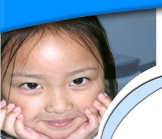|
References
A
B C
D E
F G
H I J
K L
M N
O P
R S
T U V
W
Valera-Lema, J. (1996. July 1). The art
of the Portuguese equestrian bullfights. In Mundo Taurino.
Retrieved from http://mundo-taurino.org/horses.html
Vasco da Gama. (2004, March 31). In Wikipedia:
The Free Encyclopedia. Retrieved from http://en.wikipedia.org/wiki/Vasco_da_Gama
Ventriglia, L. (1982). Conversations
of Miguel and Maria: How Children Learn English as a Second
Language: Implications for Classroom Teaching. Reading,
MA: Addison-Wesley Publishing Company. (out of print)
Vianna, H., & Chasteen, J. C. (1999). The
mystery of samba: Popular music and national identity in Brazil.
Chapel Hill: University of North Carolina Press.
Vintras, R. E. (1974). The Portuguese
connection: The secret history of the Azores base. London:
Bachman & Turner.
Warger, C., & Burnette, J. (2000, August).
Five strategies to reduce overrepresentation of culturally
and linguistically diverse students in special education.
Arlington, VA: ERIC Clearinghouse on Disabilities and Gifted
Children (ERIC EC). (ERIC/OSEP Digest #E596). Retrieved from
http://ericec.org/digests/e596.html.
Watson, S. M. R., et al (2000). Perspectives
on Quality of Life: The Brazilian Experience. In Cross-Cultural
Perspectives on Quality of Life American Association on Mental
Retardation. (Keith, K. D. et al, Eds.), (pp. 59-72).
Washington, DC: AAMR
Watson, S. M. R., & Houtz, L. E (2002, May).
Meeting the Academic Needs of Culturally and Linguistically
Diverse Students. Intervention in School and Clinic, 37,
(5) 267-278.
Watson, S. M. R. (2000.) Themes Affecting
Social Inclusion of Individual with Disabilities in Brazil.
In Cross-Cultural Perspectives On Quality Of Life.
(Keith, K. D. et al, Eds.), pp. 241 –253. Washington, DC:
AAMR
Williams, J. R. (1982). And yet they
come: Portuguese immigration from the Azores to the United
States. New York: Center for Migration Studies.
Wilson-Portuondo, M.L (2004). Immersion:
What Critical Challenges Must We Face? Distinguishing
Language Difficulties from Disabilities in Perspectives.
Massachusetts MASCD
Wise, R. (1994). Indigenous Languages
of Brazil. Retrieved from http://www.sil.org/americas/brasil/EnglLang.htm
Wolfe, J. (1996). Review of the book The
Life and Death of Carolina Maria de Jesus by Levine, R.
And Sebe Bom Meihy, J. Retrieved from http://www.tau.ac.il/eial/VII_1/wolfe.htm
The World Bank Group. (2004). Brazil
at a glance. Retrieved January 5, 2005, from http://www.worldbank.org/data/countrydata/aag/bra_aag.pdf
The World Bank Group. (2003). Portugal:
Economy, communications & transports. Retrieved from
http://web.worldbank.org/WBSITE/EXTERNAL/COUNTRIES/WBEUROPEEXTN/
PORTUGALEXTN/0,,contentMDK:20141245~menuPK:311279~pagePK:
141137~ pi PK:217854~theSitePK:309718,00.html
World Resources Institute. (2004). Population,
Health and Human Well-being: Country Profle—Brazil. Retrieved
from http://earthtrends.wri.org/text/population-health/country-profile-26.html
Walker, B. 1985. "Land chieftanship
among the Gangam." Notes on Anthropology,
4: 3-15.
Water Policy International. (2001). The
water page: Mekong River basin. Retrieved from http://www.thewaterpage.com/mekong_river.htm
Wetzel, L. (2000). Voices of the Cambodian
Community. In Ethnomed. University of Washington,
Harborview Medical Center. Retrieved from http://ethnomed.org/ethnomed/voices/cambodia.html
Yale University Center for International and Area
Studies. (2005). The Cambodian Genocide Project.
Retrieved from Yale University http://www.yale.edu/cgp/
Yourdictionary.com (2005). Austroasiatic
languages: Khmer (Cambodian). Retrieved from http://www.yourdictionary.com/languages/austasia.html

|


